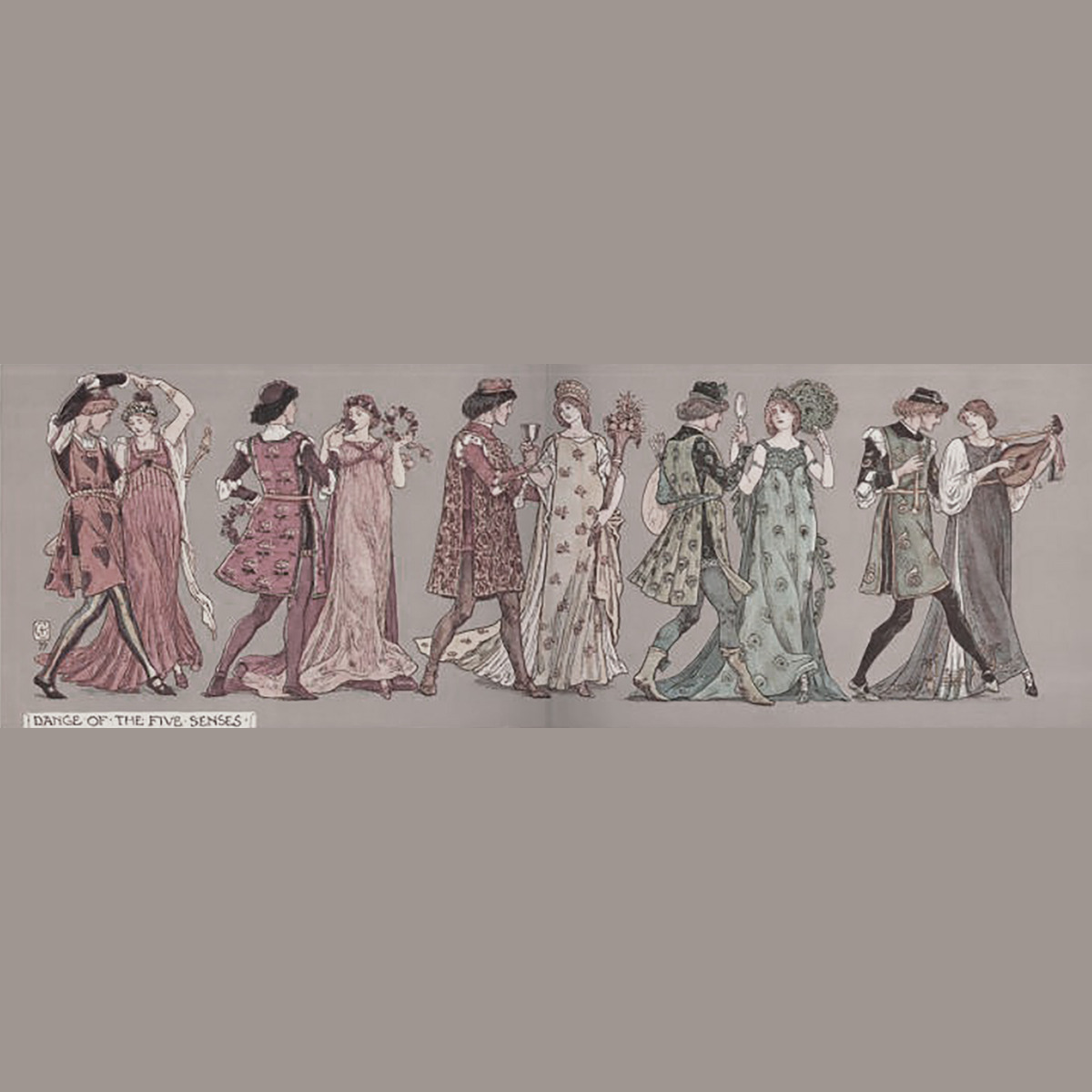The Arts and Crafts Movement was a deeply serious philosophical, practical and committed response to the industrialization of England, its ‘green and pleasant land’ in danger of being blackened by the ever burgeoning factories and the movement of the rural population to the sprawling, insanitary slums surrounding the industrial cities, epitomized by Charles Dickens’s Coketown in Hard Times. Nonetheless William Morris and his friends still found time to enjoy friendship and the joys of life, and perhaps never more so than around Christmas.
Indeed, the Art Workers’ Guild of which he was Master in 1892, has a long tradition of mounting Revels and other such communal expressions of enjoyment. The most famous of these is Beauty’s Awakening, which was performed in London’s Guild Hall in 1899 with most of the great names – Ashbee, Walter Crane, Christopher Whall, Harrison Townsend, etc – either taking part or contributing to the script, with music specially arranged and performed by Arnold Dolmetsch.
Alan Crawford in his great monograph on Ashbee describes Beauty’s Awakening thus: ‘This curious extravaganza had started in a small way, at a meeting of the Art Workers Guild on ‘Masques and Pageants’ in April 1897; but it grew, slowly at first, and then uncontrollably. The architects, painters, sculptors and craftsmen of the guild versified, argued, rehearsed and argued again; lavished disproportionate care on the stage and its furniture; drove their womenfolk to extraordinary lengths of patient needlework; and produced a gorgeous and ephemeral spectacle, the event of the Arts and Crafts Movement, a demonstration of its various talents and of its blessed irrelevance. Somehow the time was ripe. It was to be formal, like the old masques, design, pageantry, allegory, but not an antiquarian revival, for there was a symbolic and processional strain in the Arts and Crafts which found a welcome expression in the masque: it was as if their allegorical figures had stepped out of the picture frames, down from the sculpted friezes, and now enjoyed the extra freedom of verse, music and dance. And, being the Arts and Crafts, it was didactic, an allegory of London and the artists’ hope for their city, touching and specific.’
The masque nearly bankrupted the Guild and nothing as ambitious has ever been performed again, but a few years ago, when Glynn Boyd-Hart was Master, we had a glorious pantomime with costumes by Brother Madeleine Dinkel, and a splendid performance by a yodeling cow!
The spirit of irreverence lives on and long may it continue to do so, and not just at Christmas. Ashbee recalled one occasion when the Guild was expecting a lecture from William Morris he read them a chapter of Brer Rabbit instead!


